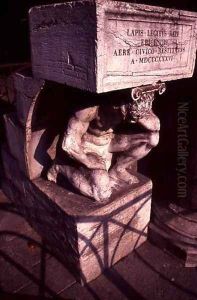Pietro da Salo Paintings
Pietro da Salo, born in 1544 in the town of Salò on the shores of Lake Garda, in the Republic of Venice (now Italy), was an Italian Renaissance luthier renowned for his exceptional stringed instruments, particularly violins and violas. While not as widely recognized as some later luthiers like Antonio Stradivari or Giuseppe Guarneri, Pietro da Salo's contributions to the development of string instruments were significant during the late 16th and early 17th centuries, a period that was crucial for the evolution of violin making.
Pietro's work is characterized by its craftsmanship, the quality of materials used, and the innovative design that contributed to the development of the modern violin family. His instruments were highly valued for their rich tone and durability, attributes that made them sought after by the musicians of his time. Da Salo's approach to luthiery was heavily influenced by the traditions of the Lombardy region, which was a significant center for musical instrument production during the Renaissance.
Throughout his career, Pietro da Salo's reputation as a master luthier grew, and his instruments were played across Europe, contributing to the spread of the Italian style of violin making. Despite the scarcity of surviving instruments attributed directly to him, those that do exist are considered invaluable for the study of the history and development of stringed instruments.
Pietro da Salo died in 1622 in Brescia, Italy. After his death, his contributions to music and instrument making continued to be celebrated, and he is remembered as a pioneer in the field of luthiery. His legacy is preserved in the few instruments that survive today and in the influence he had on subsequent generations of instrument makers in Italy and beyond.
